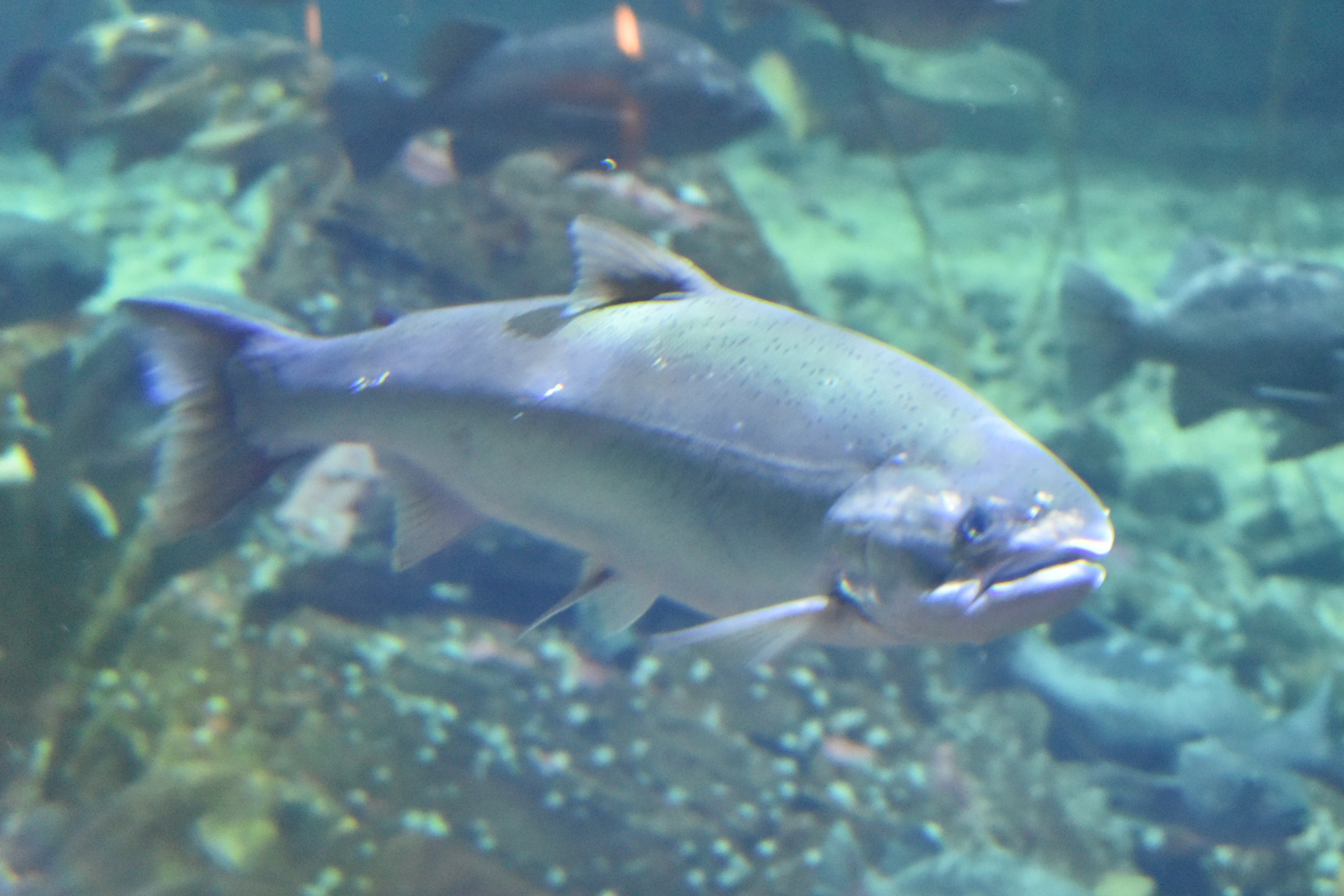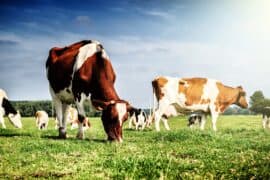Coho salmon
(Oncorhynchus kisutch)

Description
The coho salmon (Oncorhynchus kisutch; Karuk: achvuun) is a species of anadromous fish in the salmon family and one of the five Pacific salmon species. Coho salmon are also known as silver salmon or "silvers". The scientific species name is based on the Russian common name kizhuch. During their ocean phase, coho salmon have silver sides and dark-blue backs. During their spawning phase, their jaws and teeth become hooked. After entering fresh water, they develop bright-red sides, bluish-green heads and backs, dark bellies and dark spots on their backs. Sexually maturing fish develop a light-pink or rose shading along the belly, and the males may show a slight arching of the back. Mature adults have a pronounced red skin color with darker backs and average 28 inches (71 cm) and 7 to 11 pounds (3.2 to 5.0 kg), occasionally reaching up to 36 pounds (16 kg). They also develop a large kype (hooked beak) during spawning. Mature females may be darker than males, with both showing a pronounced hook on the nose. The eggs hatch in the late winter or early spring after six to seven weeks in the redd. Once hatched, they remain mostly immobile in the redd during the alevin life stage, which lasts for 6-7 weeks. Alevin no longer have the protective egg shell, or chorion, and rely on their yolk sacs for nourishment during growth. The alevin life stage is very sensitive to aquatic and sedimental contaminants. When the yolk sac is completely resorbed, the alevin leaves the redd. Young coho spend one to two years in their freshwater natal streams, often spending the first winter in off-channel sloughs, before transforming to the smolt stage. Smolts are generally 100-150 mm (3.9-5.9 in) and as their parr marks fade and the adult's characteristic silver scales start to dominate. Smolts migrate to the ocean from late March through July. Some fish leave fresh water in the spring, spend summer in brackish estuarine ponds, and then return to fresh water in the fall. Coho salmon live in salt water for one to three years before returning to spawn. Some precocious males, known as "jacks", return as two-year-old spawners. Spawning males develop kypes, which are strongly hooked snouts and large teeth. The traditional range of the coho salmon runs along both sides of the North Pacific Ocean, from Hokkaidō, Japan and eastern Russia, around the Bering Sea to mainland Alaska, and south to Monterey Bay, California.
Taxonomic tree:







